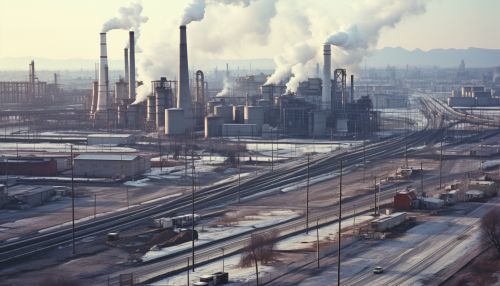Perestroika
Origins and Development
Perestroika, a term that translates to "restructuring" in English, was a political movement within the USSR that was initiated by Mikhail Sergeyevich Gorbachev in 1986. The movement aimed to restructure the USSR's economy and political system, which had been characterized by centralized planning and control, and replace it with a more market-oriented approach.


The concept of Perestroika was not entirely new within the Soviet political landscape. There had been previous attempts to reform the Soviet system, such as the NEP introduced by Lenin in the 1920s, and the Thaw under Khrushchev in the 1950s and 1960s. However, these attempts had been limited in scope and did not fundamentally alter the nature of the Soviet system.
Economic Reforms
The economic reforms under Perestroika were aimed at transitioning the Soviet economy from a centrally planned system to a mixed economy, where market forces would play a larger role. This involved a number of specific measures, including the introduction of private ownership in certain sectors, the liberalization of prices, and the decentralization of economic decision-making.
One of the key elements of the economic reforms was the Law on State Enterprises, passed in 1987. This law allowed state enterprises to set their own output levels based on demand from consumers and other enterprises. Enterprises had to cover expenses (e.g., wages, taxes, and supplies) out of their income, and could retain the surplus.
Political Reforms
Political reforms under Perestroika were aimed at democratizing the Soviet political system. This involved a number of measures, including the introduction of multi-candidate elections, the reduction of the Communist Party's role in governing the state, and the promotion of political pluralism.
One of the key elements of the political reforms was the Law on Cooperatives, enacted in May 1988. This law permitted private ownership of businesses in the services, manufacturing, and foreign-trade sectors. Individual laborers could now hire people and negotiate wages, leading to an increase in the Soviet Union's private sector.
Impact and Legacy
Perestroika had a profound impact on the Soviet Union and the world. It led to significant changes in the USSR's economic and political systems, and played a key role in the end of the Cold War. However, the reforms also led to a severe economic crisis, which contributed to the dissolution of the Soviet Union in 1991.
The legacy of Perestroika is mixed. On the one hand, it is credited with ending the Cold War and paving the way for the transition to a market economy in Russia and other former Soviet states. On the other hand, the economic crisis that followed the reforms led to a decline in living standards for many people, and the political changes led to a period of instability and uncertainty.
